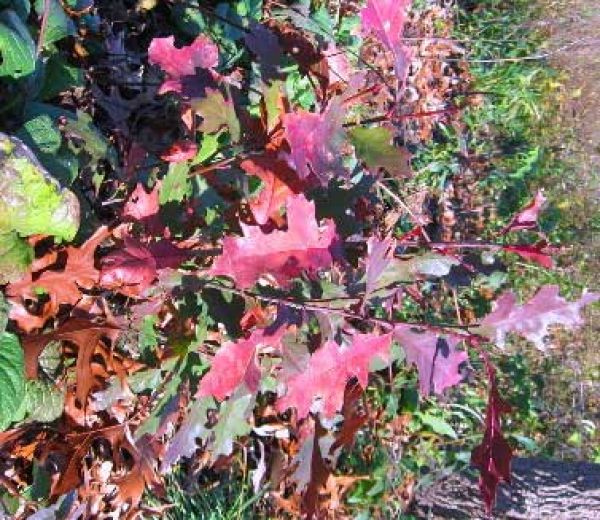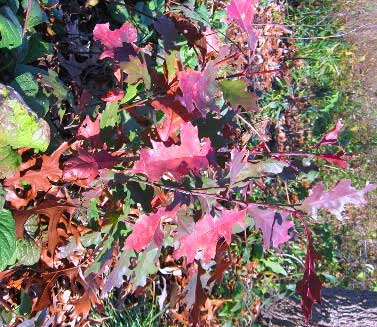
Autumn Color
 The season known as fall started September 22nd in the Northern Hemisphere.
The season known as fall started September 22nd in the Northern Hemisphere.
My first clue that autumn’s arrived is the transformation of green fields of soybeans into golden, then brown expanses as the plants die. A drive along just about any road north or west of Woodstock seems to transform overnight from green, rolling hills of corn and beans to a patchwork of greens, yellows, golds and browns, as crops reach maturity and die before harvest.
Other colorful fall crops include pumpkins and apples. Whether you choose to pick your own, or purchase apples, pumpkins and gourds from a farmstand, the brilliant golds, greens, reds and oranges of these fall fruits are sure to delight the senses!
Early autumn finds goldenrod in bloom, followed quickly by asters and their variety of hues ranging from white to pale lavender to deep purple. You can see these plants growing at the side of many roads or take a trip to a local natural area to see them up-close.
Trees are the last addition to autumn’s color palette, with oak groves the dominant woodlands in this area. White oak leaves turn a lovely reddish-brown when conditions are right, while red oak leaves turn a dark red. Bur oaks offer some contrast, turning a yellow or pale brown before losing their leaves for the winter.
So, why do we have all of this color in the fall? The fall-blooming flowers have colorful flowers for the same reason summer-blooming plants do – to attract pollinators. Bees, butterflies and even some birds like hummingbirds are able to feed on these flowers before traveling south or going into hibernation for the winter.
Trees and crops change colors through a chemical reaction that occurs as the days grow shorter and temperatures drop.
Plants are green because of the chlorophyll they produce during the growing season. The chlorophyll absorbs light to create the energy that plants need to turn carbon dioxide and water into oxygen and carbohydrates which the plants use to grow and flower. While growing, plants must continuously produce chlorophyll since it is an unstable compound that breaks down rapidly.
As temperatures drop and the days become shorter, plants stop producing chlorophyll, and the leaves lose their green hue. Other chemicals in the leaves, specifically carotene and anthocyanins, are more stable than the chlorophyll, and so their presence determines the color that leaves become once the chlorophyll is gone. Some leaves turn yellow because they contain high amounts of carotene, while others turn red in response to the high amounts of anthocyanins in their leaves.
Dry, sunny days followed by cool, dry nights produce the best show of fall tree color. This promises to be a beautiful fall.